![A transport of Jewish prisoners marches through the snow from the Bauschovitz train station to Theresienstadt. [LCID: 69720]](https://encyclopedia.ushmm.org/images/large/781755a6-1ba5-4d8e-8b2b-9f25bdf3687f.jpg)
Browse an alphabetical list of photographs. These historical images portray people, places, and events before, during, and after World War II and the Holocaust.
<< Previous | Displaying results 1-25 of 134 for "Photo" | Next >>
Rabbi Michael Dov Weissmandel, leader of the Working Group (Pracovna Skupina), a Jewish underground group devoted to the rescue of Slovak Jewry.
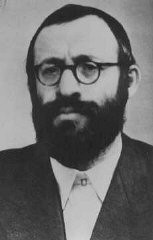
A technician determines the racial makeup of a young woman by the color of her hair.
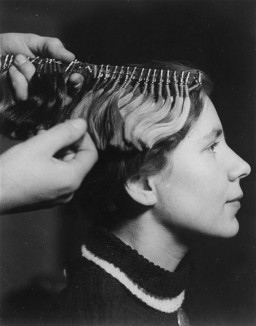
This 1938 racist illustration compares “German Youth” with “Jewish Youth.” It is subtitled, “From the face speaks the soul of the race.” It comes from Alfred Vogel's text Inheritance and Racial Hygiene. The Nazis used racist theories to label groups of people as inferior and as the "enemy." The Nazis claimed that "superior" races had not just the right but the obligation to subdue and even exterminate "inferior" ones.
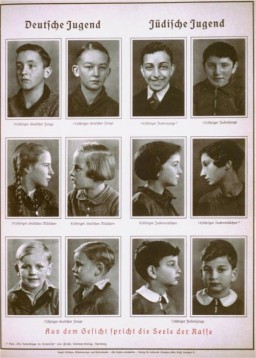
German police raid a vandalized Jewish home in the Lodz ghetto. Lodz, Poland, ca. 1942.
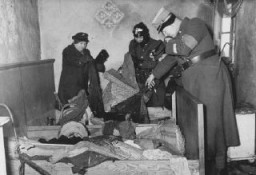
Rail cars discovered by Soviet forces and containing possessions taken from deportees. This abandoned train was on the way to Germany loaded with personal effects (in this case, pillows) taken from Auschwitz victims. Auschwitz, Poland, after January 27, 1945.
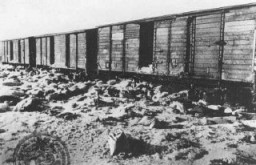
View of the railcar on display in the Permanent Exhibition of the United States Holocaust Memorial Museum. Washington DC, June 19, 1991. Courtesy of Polskie Koleje Panstwow S.A.
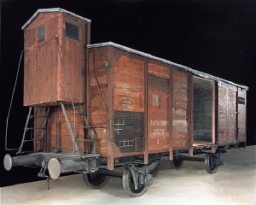
At the Jozsefvarosi train station in Budapest, Raoul Wallenberg (at right, with hands clasped behind his back) rescues Hungarian Jews from deportation by providing them with protective passes. Budapest, Hungary, 1944.

Raphael Lemkin (right) with Ambassador Amado of Brazil (left) before a plenary session of the General Assembly at which the Convention on the Prevention and Punishment of Genocide was approved. Palais de Chaillot, Paris, December 11, 1948.
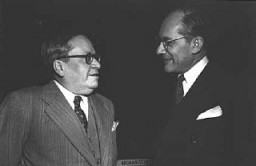
Sack of wood flour (finely powdered wood or sawdust) used to make substitute bread. The official ration of this "bread" for Soviet prisoners of war was less than 5 ounces a day. Deblin, Poland, 1942 or 1943.
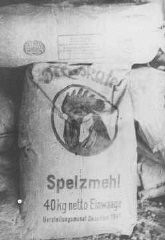
Exterior view of barracks at the Ravensbrück concentration camp. Ravensbrueck, Germany, between May 1939 and April 1945.
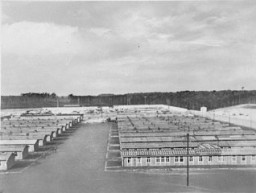
Red triangle patch worn by Czech political prisoner Karel Bruml in Theresienstadt. The letter "T" stands for "Tscheche" (Czech in German).
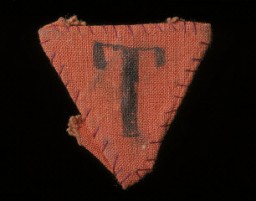
Refugee boys from Syria play on old tents in the Domiz refugee camp outside Duhok, Iraqi Kurdistan. September 5, 2015.
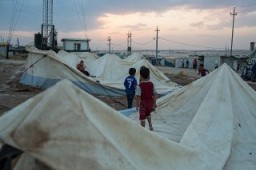
A camp for Darfurian refugees in Chad. Photograph taken in 2005.In July 2004 the United States Holocaust Memorial Museum declared a Genocide Emergency for the Darfur region of Sudan.
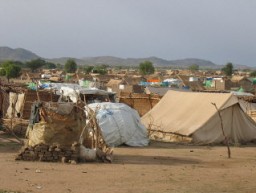
View of Zbaszyn, the site of a refugee camp for Jews of Polish nationality who were expelled from Germany. The Jewish refugees, hungry and cold, were stranded on the border, denied admission into Poland after their expulsion from Germany. Photograph taken between October 28, 1938, and August 1939. Warsaw-based historian, political activist, and social welfare worker Emanuel Ringelblum spent five weeks in Zbaszyn, organizing assistance for the refugees trapped on the border.
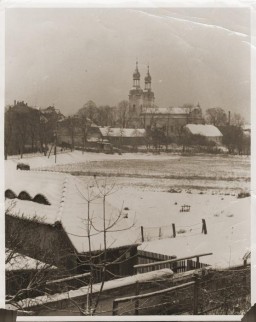
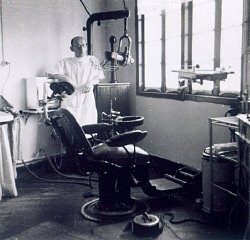
At some point after the war, Sophie received this small stuffed bear (about three inches high) as a present from her mother. She named it “Refugee,” just like she and her mother were refugees of the war.

A replica of "Refugee" bear and a photo of a Darfurian child refugee, items taken by Commander Mark Polansky (pictured) on a December 2006 Space Shuttle mission.

A young Jewish refugee, wounded while resisting British soldiers on board the Aliyah Bet ("illegal" immigration) ship Knesset Israel, is deported to a Cyprus detention camp. Haifa port, Palestine, April 12, 1946.

Refugees crowd the rail of the Aliyah Bet ("illegal" immigration) ship Josiah Wedgewood, anchored at the Haifa port. British soldiers transported the passengers to the Athlit internment center. Palestine, June 27, 1946.
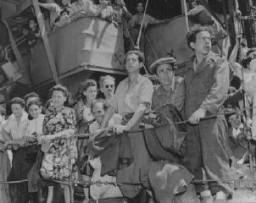
Refugees aboard the St. Louis wait to hear whether Cuba will grant them entry. Off the coast of Havana, Cuba, June 3, 1939.

Refugee women and children arrive by truck in Tuzla during the Bosnian War, which lasted from 1992 to 1995. They are likely coming from Srebrenica. Photo taken in March 1993.
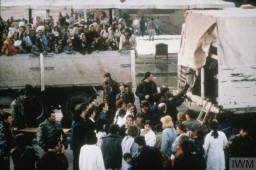
Jewish refugees crowd together in the sleeping quarters aboard the Exodus 1947. July 1947,
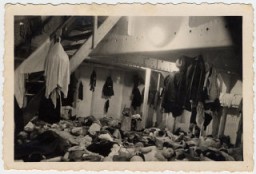
Refugees displaced by the violence in Syria wait at a transit center in Jordan for trucks that will take them to the Zaatari refugee camp. February 2014.
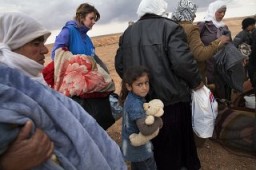
Refugees displaced by the violence in Syria walk to a transit center in Jordan where they will be transported to the Zaatari refugee camp. February 2014.
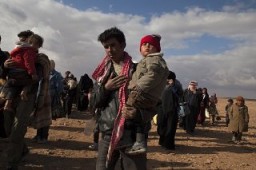
Belgian refugees in Paris during World War I, the first great international conflict of the twentieth century. Paris, France, 1914.
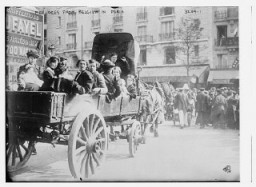
We would like to thank Crown Family Philanthropies, Abe and Ida Cooper Foundation, the Claims Conference, EVZ, and BMF for supporting the ongoing work to create content and resources for the Holocaust Encyclopedia. View the list of donor acknowledgement.